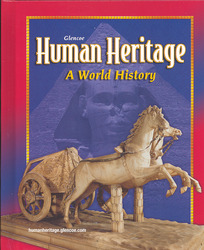Human Heritage: A World HistoryChapter 25:
The ChurchWeb Activity Lesson Plans“Crusaders”Introduction
Students have read about the Crusades and their effect on western Europe during the Middle Ages. In this exercise, students will research the characteristics of the crusades, their events, and the people who participated in them, to understand the reasons for the wars. Lesson Description
Students will use information from the Crusades page at The Online Reference Book for Medieval Studies Web site to learn about the Crusades. Students will read a description of the speech by Pope Urban II, descriptions of the battles of the Crusades, and a discussion about the Crusader's vows. Students will then answer four questions and apply this information by imagining they are accompanying Crusaders making a list of what provisions they need for the long journey. Instruction Objectives
- Students will be able to summarize why the Crusades began and to characterize the people and events of the Crusades.
- Students will be able to use this knowledge to prepare lists of supplies they think Crusaders would need if they were going on a year-long Crusade.
Student Web Activity Answers
- The most important reason was that Christians felt the need to take back control of the Holy Land from the Muslims. The reforms to the Church brought the belief that violence used to advance Christ's kingdom was justifiable. This doctrine of "Just War" became known as "Holy War." Another circumstance was that improved farming techniques led to an increased food supply. With food being more plentiful, the population of western Europe increased, and this led to the availability of people for a Holy War.
- Pope Urban II gave a speech on November 27, 1095, calling upon the nobility of western Europe to assist the Byzantines in their war against the Muslim Turks.
- The common people and the nobility answered Pope Urban's call to retake Jerusalem. Over the course of 200 years, warriors included King Richard the Lionheart of England, King Philip II Augustus of France, Emperor Frederick Barbarossa, and other nobility.
- Crusading vows involved a ceremony in which a would-be Crusader swore to a clergy member that he would carry out an armed "pilgrimage" in support of Holy Places. He could only take the vows with the permission of his wife. After his vows were made, he would receive a cloth cross to wear on his clothes, and his property would be placed under the protection of the Church.
- Students' lists will vary.
 | 




